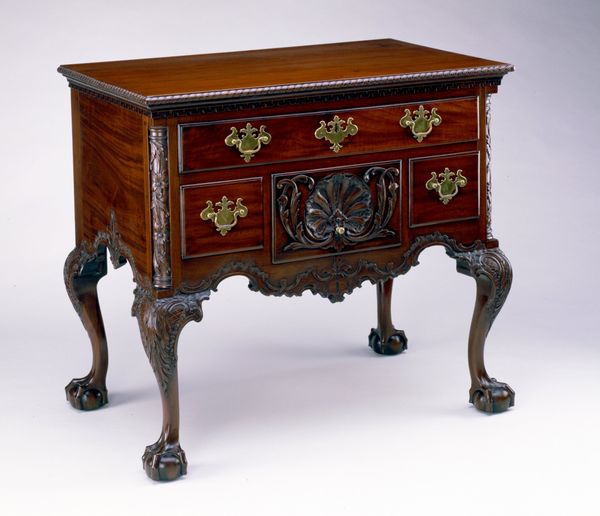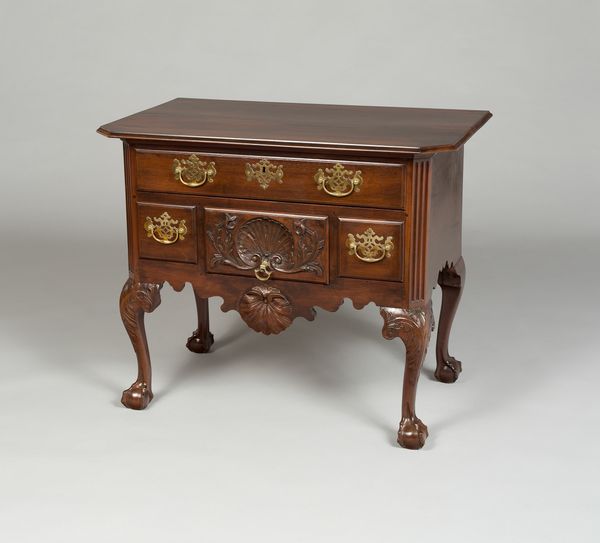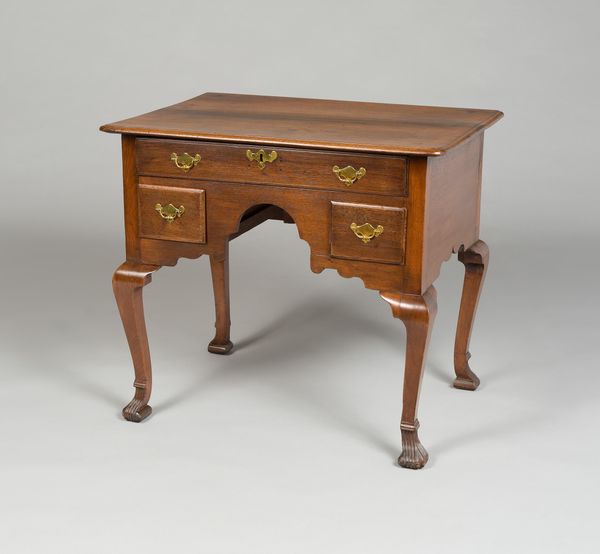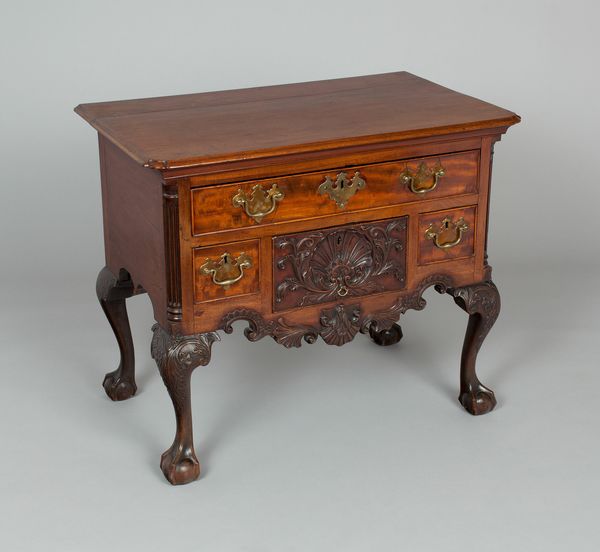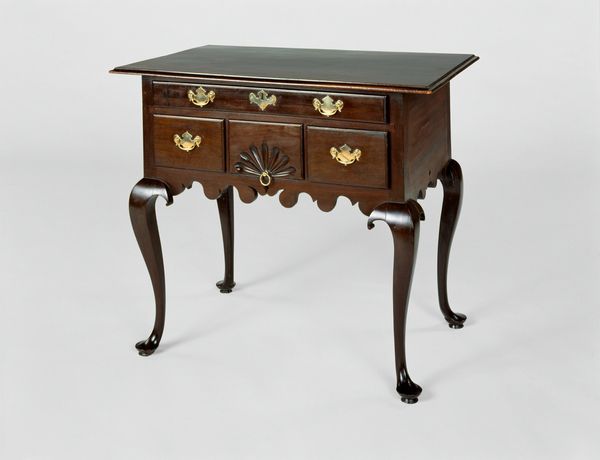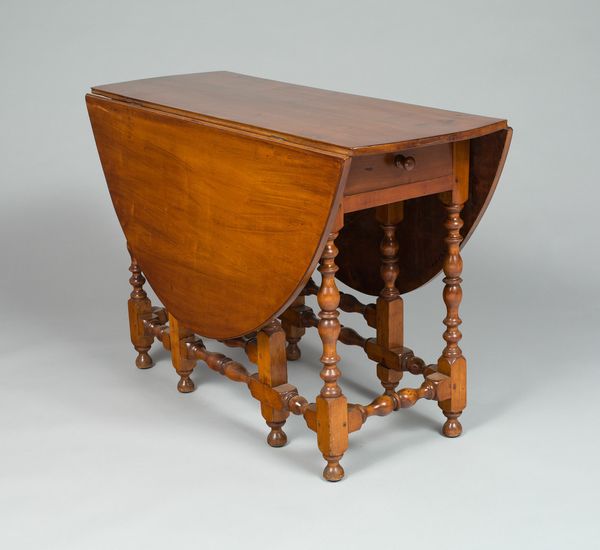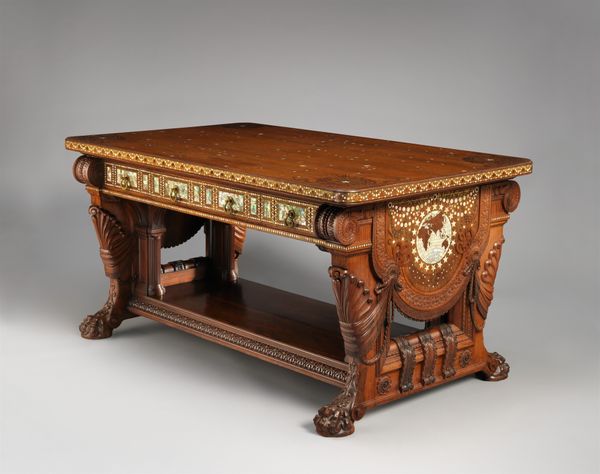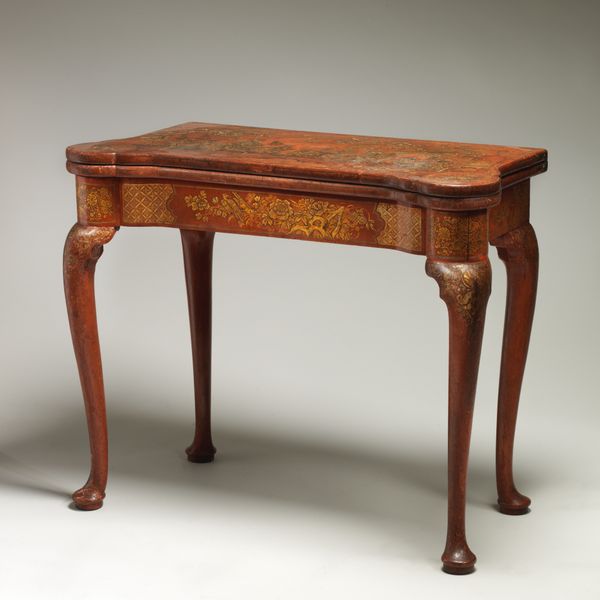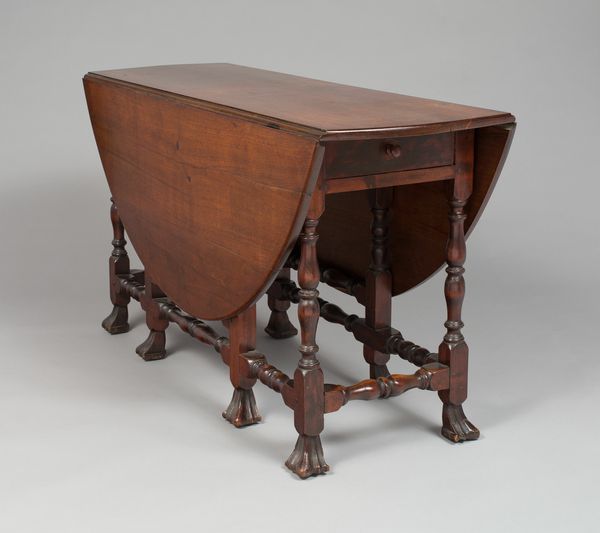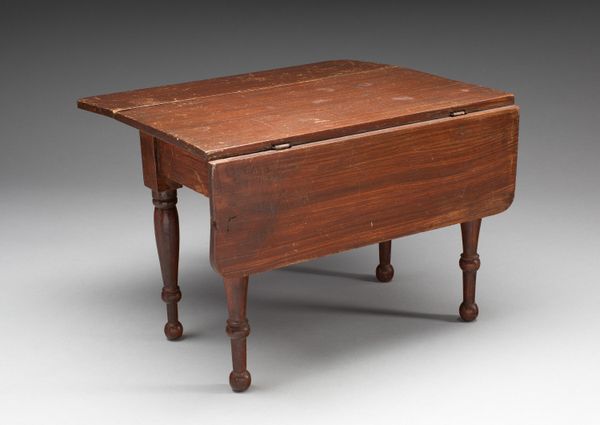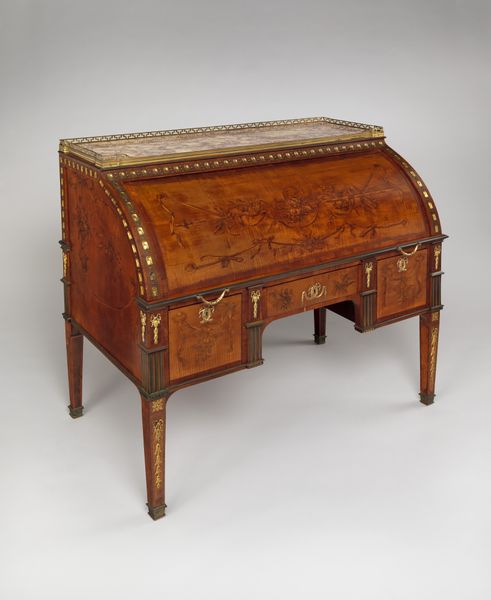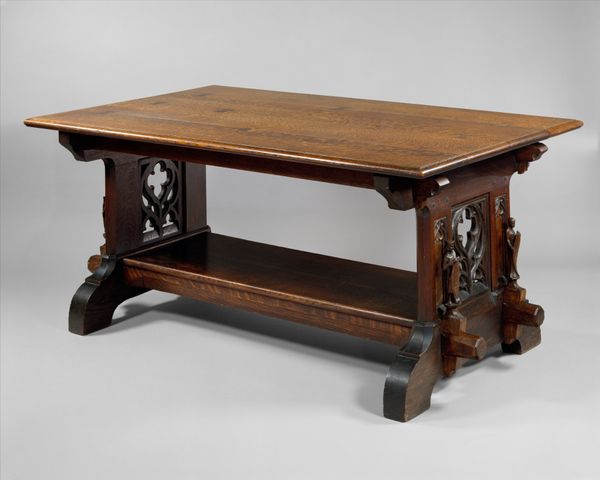
wood
#
baroque
#
furniture
#
wood
#
decorative-art
Dimensions: 73.7 × 86. 4 × 54.6 cm (29 × 34 × 21 1/2 in.)
Copyright: Public Domain
Editor: So, this lovely little table is called "Dressing Table," dating from between 1700 and 1730. It's currently at the Art Institute of Chicago and is by an anonymous artist. It is constructed of wood. I find its small size so charming. What's your take on it? Curator: It is indeed charming! Seeing an object like this, I immediately think about the socio-cultural role furniture played in the 18th century. Consider who owned this table and where it might have been placed. It speaks volumes about gender, status, and private vs. public spaces during that era. Editor: Status, absolutely. I imagine this wasn’t in just anyone’s home! What visual elements or construction details convey that? Curator: The wood itself suggests a certain level of affluence. Beyond raw materials, the carved details—look at the shaped frieze below the drawers and the elaborate turning on the legs!—would require specialized skills and, consequently, money to commission. The very existence of a dedicated dressing table points to a culture concerned with outward presentation and the rituals surrounding personal appearance. Editor: So it's more than just a piece of furniture; it's almost a reflection of the social norms of the time. Curator: Precisely! Think about the role of cosmetics, hairstyles, and clothing in shaping identity. A dressing table like this becomes a stage where those performances are carefully constructed. How does seeing an object like this influence your sense of the people living during this time? Editor: That is very interesting. Thinking of this not as "furniture", but rather as an essential component of people's daily life. I had not considered its implications, thank you. Curator: It's important to reflect on the broader societal context and the political symbolism surrounding even seemingly mundane objects like furniture. We begin to understand the intricate web of meanings embedded within material culture.
Comments
No comments
Be the first to comment and join the conversation on the ultimate creative platform.
